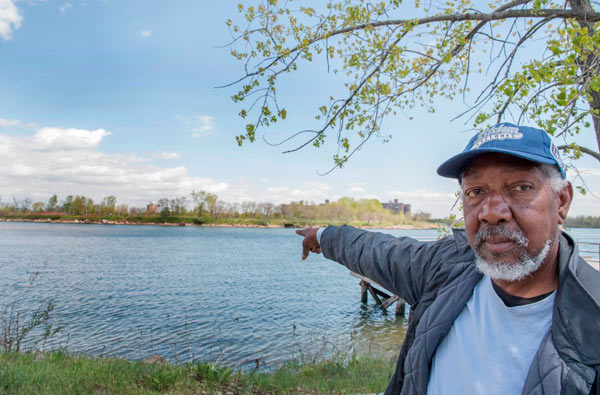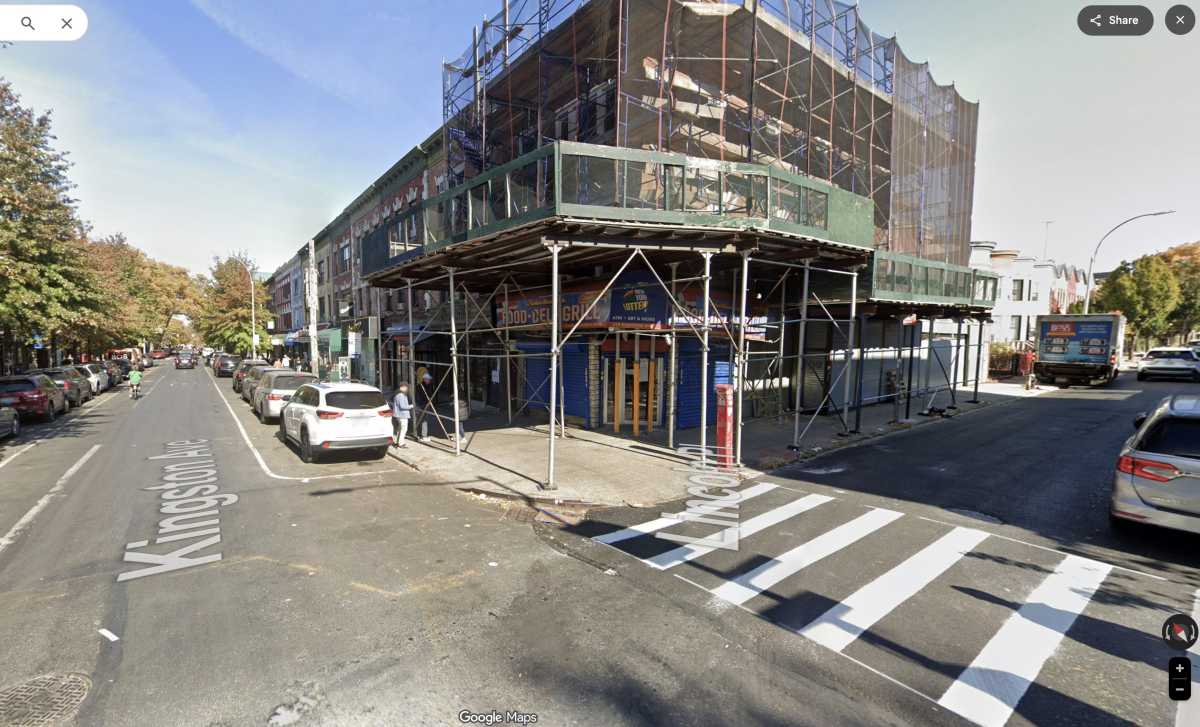Call it a sign of the slimes.
Locals who say they have become sick from fishing and swimming in Coney Island Creek demand the city and state line the shore with signs warning people to avoid the fetid waters — something officials failed to do after discovering last September that a Gravesend apartment complex was dumping 200,000 gallons of raw sewage per day into the creek.
It’s the least authorities can do after keeping locals in the dark, said one fisherman.
“They must put up signs. People still have no idea what happened or the risks of being in that water,” said lifelong Coney Islander Richie Holt, who used to regularly reel in striped bass for dinner but has stopped since learning about the deluge of waste that flowed into the creek — possibly for years. “It’s absolutely disgusting, but what’s more disgusting is that the city doesn’t act like they care.”
Regulators with the city’s Department of Environmental Protection discovered on Sept. 7 that roughly 1,000 apartments in 16 Gravesend buildings were flooding the creek with waste through an illegal sewage hook-up to an emergency storm drain. The city told the state’s Department of Environmental Conservation, but neither agency publicly announced the news to people who actually use the waterway.
And now that summer is approaching, officials are failing residents all over again by not plastering the beach with warnings, say those who frequent the waterway and have suffered symptoms often experienced by people exposed to raw sewage.
“I had no idea. How hard is it to put a sign up?” said Coney Islander Devin Brown, who lives five blocks from the shore. “Last year I went swimming in there and not too long after I got a really bad ear infection — I had a fever, was nauseous. It didn’t really dawn on me until later that it was probably from the creek. If there were more signs I definitely wouldn’t have gone anywhere near the water.”
The stretch of beach at Bayview Avenue near W. 33rd Street only has one prominent sign that states, “Please no swimming or bathing,” which has been up for years and has little impact. People regularly take dips, fish, and play fetch with their dogs in the poop-filled water.
City data found the creek had the turdiest water in 2014, according to an analysis by the data-crunching blog I Quant NY run by Ben Wellington, who is a city planning professor at Pratt Institute.
The samples tested for exceptionally high levels of fecal coliform, which is bacteria found in the intestines of warm-blooded animals, and indicates a greater chance of getting sick from swallowing the water. Swimmers are more likely to contract diseases including hepatitis, dysentery, and gastroenteritis in waters festering with fecal flow.
The state ranks the creek as a Class I waterway that should be of a quality suitable for “primary contact recreational uses” such as swimming and water skiing, according to the Department of Environmental Conservation’s website.
And the Environmental Protection Agency’s failure to ensure the state enforces that standard is the crux of a lawsuit a coalition of environmental organizations plan to file against the agency.
Typically, the task of posting warnings at public beaches falls to the city’s Department of Health. But Coney Island Creek’s coast is not permitted for swimming by the city and the department does not endorse diving into the tributary, according to an agency spokesman.
The city’s Department of Environmental Protection did not respond to questions on whether it will install warning signs. But the state conservation agency says it is willing to pick up the slack, and is working with city officials to determine when and where signs will be posted, according to an agency spokeswoman.
“While [the Department of Environmental Conservation] does not have primary responsibility to post signage at state waters that are not considered swimming beaches, based on community requests, [the Department of Environmental Conservation] will work with local officials and community stakeholders to ensure proper signage is posted,” said Erica Ringwald.
But the state has yet to reach out to the local community board, which is anxious to start the process.
“When? The question is ‘When?’ ” said Eddie Mark, district manager of Community Board 13.
“We need to do it now before the summer. We need to nip it in the bud now.”


























